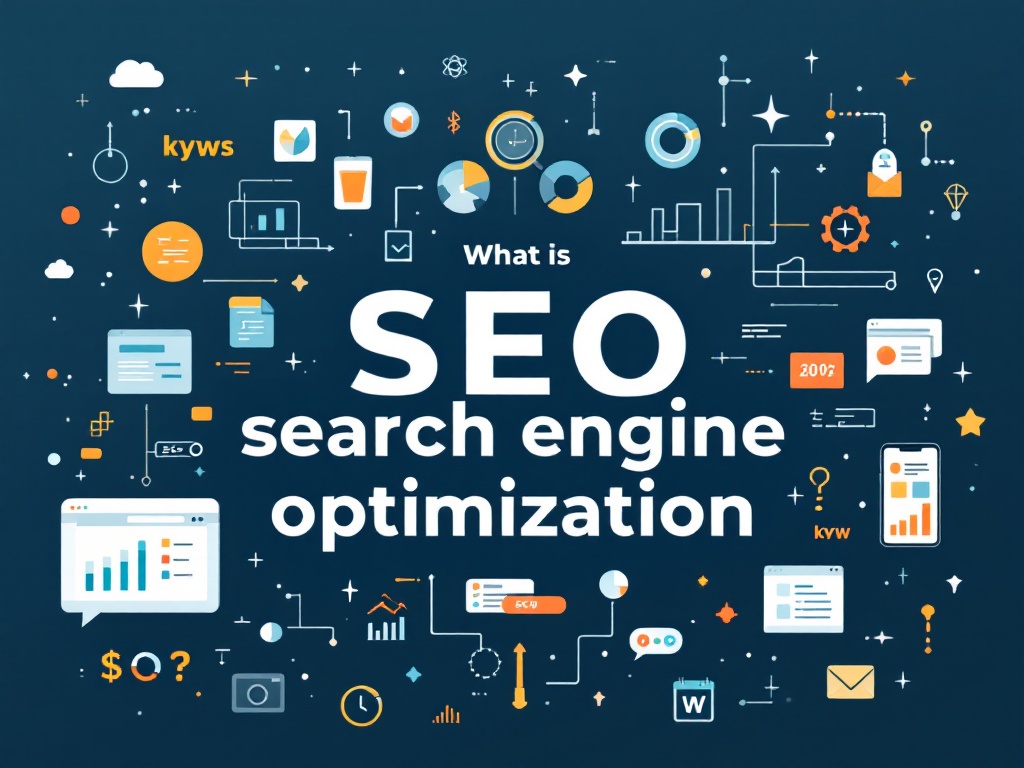Blog

What is search engine optimization?
Search engine optimization (SEO) is a multifaceted digital marketing strategy aimed at enhancing a website's visibility on search engines like Google, Bing, and Yahoo. The ultimate goal of SEO is to increase organic (non-paid) traffic to a website through improved rankings in search engine results pages (SERPs). SEO encompasses various practices and techniques that focus on both on-page and off-page factors influencing a website's performance in search engines.
A Step By Step Guide To The Basics Of Seo
1. Keyword Research
Keyword research is foundational to SEO. It involves identifying and analyzing the terms and phrases that potential visitors use when searching for information related to a website's content. Tools like Google Keyword Planner, SEMrush, and Ahrefs help marketers discover relevant keywords with high search volumes and manageable competition. Understanding user intent—whether informational, navigational, or transactional—is crucial in selecting the right keywords.
2. On-Page SEO
On-page SEO refers to the optimization of individual web pages to rank higher and earn more relevant traffic. It includes:
Content Quality: High-quality, engaging, and relevant content is critical. Search engines favor content that provides value to users, answers their questions, and keeps them engaged.
- Title Tags and Meta Descriptions: These elements serve as a brief summary of the webpage's content and appear in the search results. They should be compelling and include target keywords to improve click-through rates.
- Header Tags: Properly structured header tags (H1, H2, H3) help organize content and improve readability. They also signal to search engines the hierarchy and importance of information on the page.
- URL Structure: A clean and descriptive URL structure that includes relevant keywords can enhance both user experience and search engine indexing.
- Image Optimization: Images should be optimized with appropriate file names, alt text, and sizes to improve load times and accessibility.
- Internal Linking: Linking to other pages within the same website helps establish a hierarchy of information and improves crawlability for search engines.
Off-Page SEO
Off-page SEO focuses on actions taken outside of the website to impact its rankings within search engine results. This primarily involves building backlinks, which are links from other websites pointing to your site. High-quality backlinks from reputable sites signal trustworthiness and authority to search engines. Key aspects include:
- Link Building: Strategies include guest blogging, influencer outreach, and creating shareable content that naturally attracts links.
- Social Media Engagement: While social signals do not directly impact SEO, a strong social media presence can drive traffic and increase visibility, leading to more backlinks.
- Brand Mentions: Unlinked brand mentions can also strengthen a site's authority. Monitoring and engaging with mentions across the web can enhance brand visibility.
Technical SEO
Technical SEO involves optimizing the infrastructure of a website to ensure that search engines can crawl and index it effectively. Essential aspects include:
- Website Speed: Fast-loading pages improve user experience and are favored by search engines. Tools like Google PageSpeed Insights can identify areas for improvement.
- Mobile-Friendliness: With the increasing use of mobile devices, having a responsive design that provides an optimal experience across all devices is critical.
- Secure Sockets Layer (SSL): Websites using HTTPS are prioritized by search engines due to the importance of security in online transactions.
- XML Sitemaps: An XML sitemap helps search engines understand the structure of a website and facilitates better indexing.
- Robots.txt: This file instructs search engines on which pages to crawl and which to exclude, helping manage site indexing.
5. User Experience (UX)
User experience plays a vital role in SEO. Factors such as page load times, mobile usability, and overall site navigation contribute to how users interact with a website. A positive user experience can lead to lower bounce rates and higher engagement, both of which are beneficial for SEO.
The Importance of SEO
SEO is crucial for businesses and organizations because it enhances online visibility and credibility. A majority of web traffic is driven by search engines, and appearing on the first page of SERPs significantly increases the likelihood of attracting visitors. SEO not only helps in generating leads and sales but also builds brand awareness and trust.
Moreover, SEO is a cost-effective marketing strategy compared to paid advertising. While it may take time to see significant results, the long-term benefits of sustained organic traffic often outweigh initial investments.
Conclusion
In summary, search engine optimization encompasses a wide range of strategies and techniques aimed at improving a website's visibility and ranking on search engines. By focusing on keyword research, on-page and off-page optimization, technical SEO, and user experience, businesses can create a robust online presence that attracts and retains visitors, ultimately driving growth and success in the digital landscape.
WHAT WOULD YOUR RETURN ON INVESTMENT LOOK LIKE USING OUR DIGITAL MARKETING VORTEX METHOD TO YOUR BUSINESS?
GET THE DIGITAL MARKETING AGENCY SECRETS: 7 STEPS TO DOUBLE YOUR WEBSITE TRAFFIC IN 90 DAYS OR LESS








